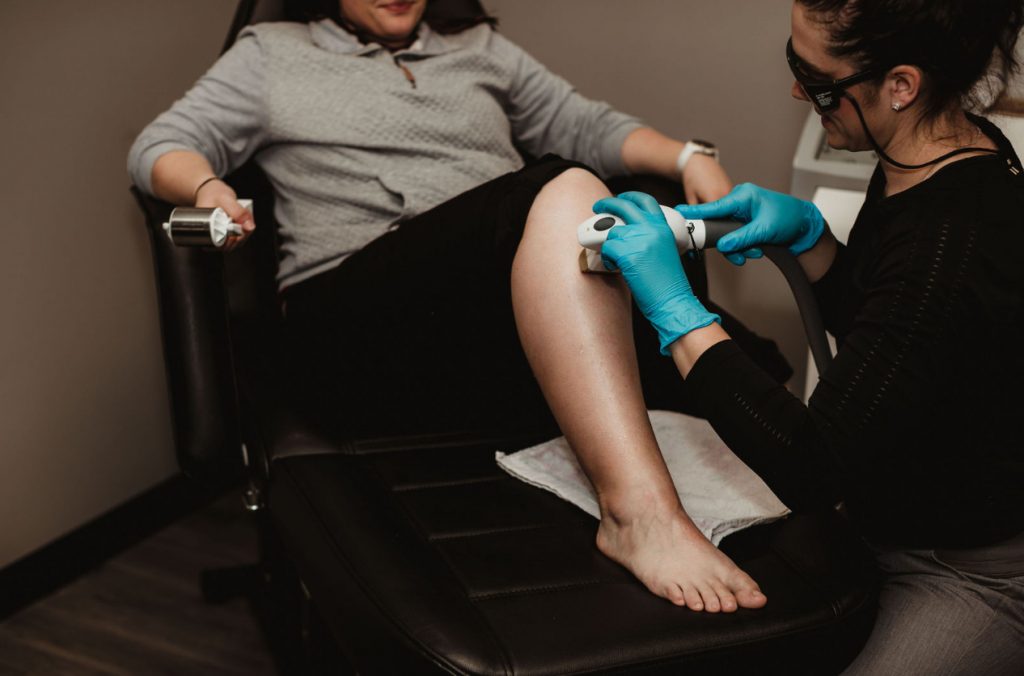
Rosacea is a common skin disorder that primarily affects the facial skin. It causes redness around the nose, chin, cheeks, and forehead. With time, the redness may get more intense, taking on a ruddy appearance. Small blood vessels may become visible.
In some circumstances, rosacea can occur on the chest, ears, neck, or scalp. Rosacea can cause solid red bumps and pus-filled pimples if not treated. Rhinophyma is a bulbous, swollen look of the nose caused by the condition. Rosacea can impact the eyes, causing them to become irritated and bloodshot or watery. Styes are possible. This is known as ocular rosacea.
Rosacea affects around 14 million Americans in the United States. The majority of them are unaware that they have this condition.
Who Is Likely To Get Rosacea?
People with fair skin who tend to blush easily may be at a higher risk of this condition. Adults over 30 are more likely to be affected, while rosacea can occur in adolescents and rarely in children. A rosacea family history increases the likelihood of the condition.
Rosacea is more common in women, although men tend to have more severe symptoms. One possible reason is that males delay medical treatment until their rosacea has advanced.
What Causes Rosacea?
The exact cause of rosacea is unknown; however, various theories exist. One theory is that rosacea is a component of a more generalized blood vessel disorder. According to other theories, the disorder is caused by microscopic skin mites, fungus, psychological factors, or a connective tissue malfunction beneath the skin. Although the exact cause of rosacea is unclear, many circumstances and conditions may trigger it.
What Are The Signs and Symptoms Of Rosacea?
Rosacea’s appearance might differ widely from one individual to another. Usually, not all of the potential indications and symptoms appear. Rosacea is always included by at least one of the primary signs listed below. Secondary signs and symptoms may also develop.
Rosacea’s main signs include:
- Flushing: Many individuals with rosacea have a history of blushing or flushing frequently. The redness of the face, which may come and go, is often the early indication of the condition.
- Persistent redness: Persistent facial redness may resemble a persistent blush or sunburn.
- Bumps and pimples: Small, solid, red bumps or pus-filled pimples frequently appear. Sometimes the bumps may resemble acne, although there are no blackheads. There may be burning or stinging.
- Blood vessel visibility: Many people with rosacea have visible small blood vessels on their skin.
Other potential rosacea signs and symptoms include:
- Eye irritation: Some people with rosacea may have irritated eyes that appear watery or bloodshot. Ocular rosacea is a condition that can cause styes, as well as redness and swelling of the eyelids. If severe cases are not addressed, they can cause corneal damage and vision loss.
- Dry appearance: The central facial skin may be rough and appear quite dry.
- Burning or stinging: On the face, burning or stinging sensations may occur, as well as itchiness or a feeling of tightness.
- Plaques: Raised red patches or plaques may form without changes in the surrounding skin.
- Skin thickening: In some cases of rosacea, the skin may thicken and enlarge due to excess tissue, resulting in a condition known as rhinophyma. This condition commonly affects the nose, causing a bulbous appearance.
- Swelling: Facial swelling (edema) can develop independently or can accompany other rosacea signs.
- Signs beyond the face: Signs and symptoms may appear in areas other than the face, such as the neck, chest, scalp, or ears.
How Is Rosacea Treated?
Because the signs and symptoms of rosacea differ from person to person, so do the treatment methods. The following are some rosacea treatments:
• Medicines: To treat the bumps, pimples, and redness associated with the disorder, doctors may give oral and topical medicines. Medicines can control the condition and then maintain it in remission.
• Surgical procedures: Lasers can be used by doctors to eliminate visible blood vessels, decrease the amount of extensive redness on the face, and correct nose disfigurement in some situations.
How Do Dermatologists Treat Rosacea?
- A dermatologist must first identify all of the patient’s rosacea signs and symptoms to treat rosacea. This is important since different signs and symptoms need different treatments.
- Medicine that is applied to the rosacea.
- A sunscreen (wearing it every day can help prevent flare-ups).
- An emollient to help in skin repair.
- Lasers and other forms of light treatments
- Antibiotics: (applied to the skin and pills).
Dermatologists can use lasers to remove thickened skin on the nose and other parts of the face.
- Dermabrasion (a procedure that removes skin).
- Electrocautery (A procedure that treats the skin by sending an electric current into it).
When rosacea affects the eyes, a dermatologist may prescribe eye medication and advise you to wash your eyelids several times a day.
Rosacea Treatment in Kearney, NE
Contact Elite Health & Wellness at (308) 455 1500 for all of your dermatologist needs in Kearney, Nebraska.

